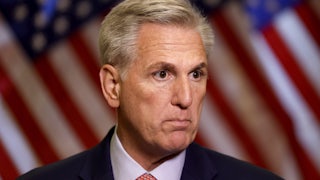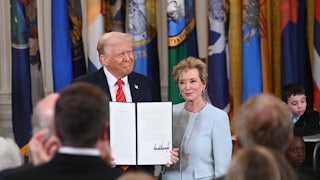As temperatures spike this August, one group may be affected more than any other: people whose jobs won’t let them escape the heat.
Heat exposure kills 2,000 workers in the United States every year, according to a report released by Public Citizen in May, and many more—up to 170,000—suffer from serious heat-related injuries. Those numbers are almost certain to grow: Every one degree Celsius increase in temperature brings a 1 percent increase in such injuries. As the planet warms, many workplaces are becoming deadly infernos.
Many employers couldn’t care less. Their goal is to maximize profits, not to ensure their workers are safe. Bosses could give workers breaks in shade or air conditioning, and they could also provide cool drinking water. Some do, of course. But many don’t—and they won’t, without stricter laws and collective action by workers.
This is not merely a labor issue, though. If this summer of unimaginable heat has taught the left anything, it’s that the politics of the environment and the politics of work are inextricably linked. Climate change is a workplace issue for everyone who toils unprotected from the weather.
Conservative governments have acted swiftly to ensure that no employees get any crazy notions about having the right to survive their workday. My TNR colleague Kate Aronoff reported in June that Texas Republicans have nullified city-level protections enacted by Dallas and Austin. In May, Florida failed to pass a bipartisan legislative effort to get employers to meet some minimal heat safety standards, a weak and voluntaristic measure but apparently too worker-friendly for state Republicans.
Even at the federal level, no solutions are immediate. Biden is working on protecting workers in extreme heat through the Occupational Safety and Health Administration, but reforms at that level are slow to enact and slower still to take effect. Congress could pass an interim measure, but that, too, seems likely to be stymied by Republicans and business interests.
Meanwhile, workers are organizing. When some 340,000 UPS workers came close to a strike last month—which would have been the largest single-employer strike in U.S. history—climate change was a major reason. UPS workers were suffering from heat-related illnesses, sending at least 143 of them to the hospital over the past seven years, and several to their deaths. Not only do they spend time outside, but their delivery trucks—which are not air-conditioned—can heat up to as much as 120 degrees, they are forced to work without breaks to meet productivity targets, and cameras spy on them to measure productivity. Their threat to strike provoked the company to agree to install air conditioning, and some of the economic gains in the tentative contract may ease the productivity pressure.
The problem of extreme heat is affecting labor relations throughout the delivery industry. In California, some Amazon workers went on strike last month, also over extreme heat, no air conditioning in the trucks, and productivity targets that preclude breaks. Amazon responded by firing the contractor that employed those workers instead of addressing the core problem: the time pressure baked into its own business model.
Extreme heat is not the only workplace safety hazard wrought by climate change. Air pollution has reached dangerous levels in many places. The extreme temperatures in Arizona this summer exacerbated ground-level ozone, prompting high pollution advisories; scientists predict the ozone threat will increase with global warming. Meanwhile, widespread pollution from the Canadian wildfires was inescapable for millions of outdoor workers in the U.S. (The Bureau of Labor Statistics reported in July that one-third of all workers had “regular outdoor exposure” in 2022.) While the New York City government was sending panicked warnings to stay indoors, many workers had no choice but to be outside—and many employers did nothing to provide for their safety. So UPS workers, represented by the Teamsters, and gig workers for companies like Uber Eats and DoorDash, who organized with a workers’ group called Los Deliveristas Unidos, cooperated to deliver N95 masks to their fellow delivery drivers.
Delivery workers are the canaries in the coal mine on the intertwined issues of extreme heat and air pollution. In the coming years, many other sectors—construction, fishing, roofing, farming, landscaping, professional sports, and so on—will be affected by workers’ struggle to stay safe in extremely hot weather and toxic air. Global warming’s health consequences for workers are already visible and dire, and demand solidarity and a reckoning.
Climate and labor are often spoken of as separate issues, at times in conflict, as unions sometimes oppose environmental policies that may threaten workers’ jobs, while environmental groups don’t always put workers at the center of proposed schemes for a carbon-free economy. But now, during the hottest summer on record, the political implications should be clear for the climate movement and labor movement alike: The fight to ease global warming is inseparable from the struggles for a safer workplace. Mandatory water breaks and air-conditioning must be seen as climate issues, and our ongoing addiction to fossil fuels understood as a brutal assault on labor.






